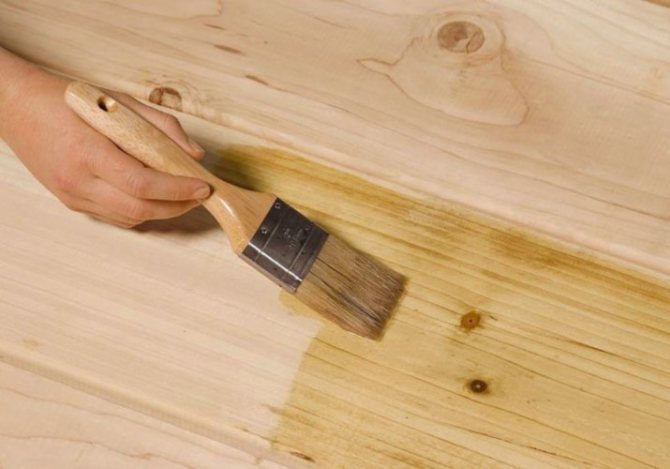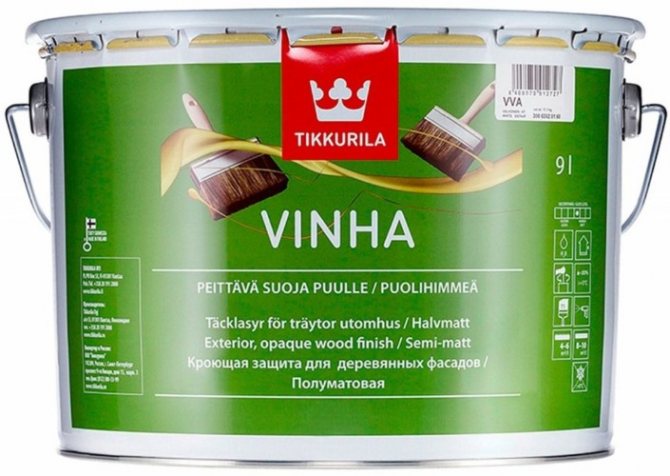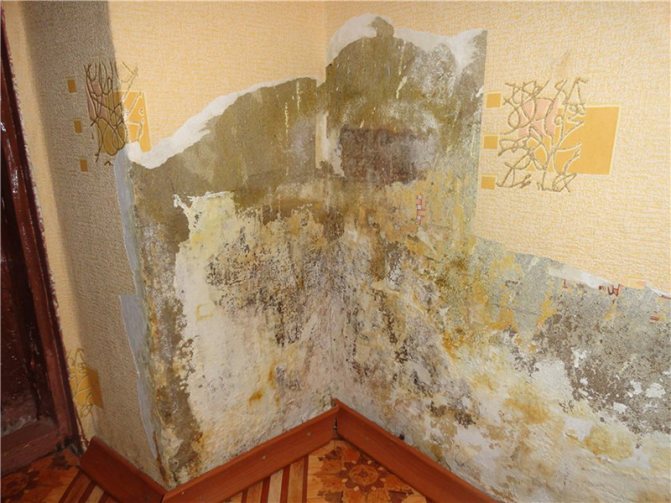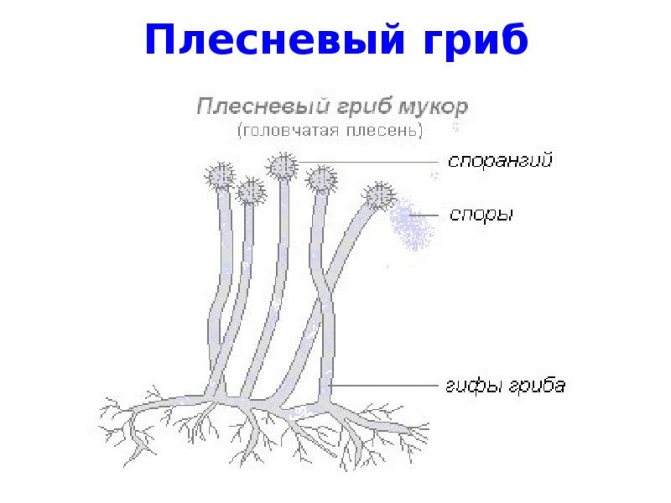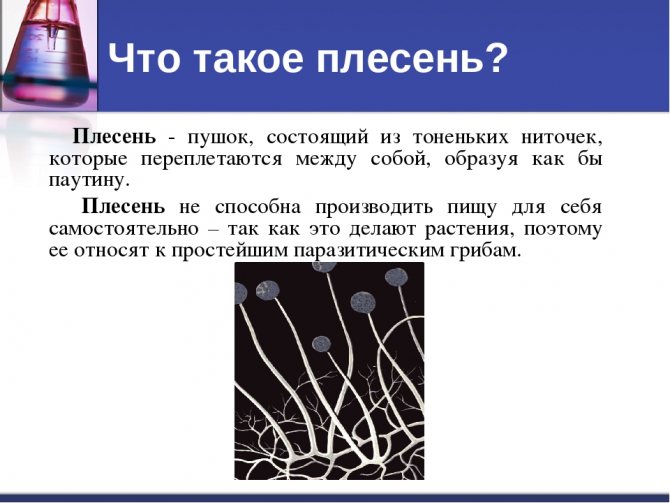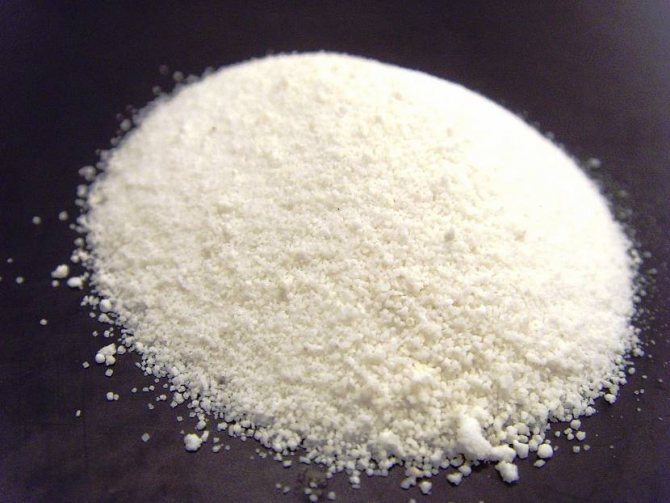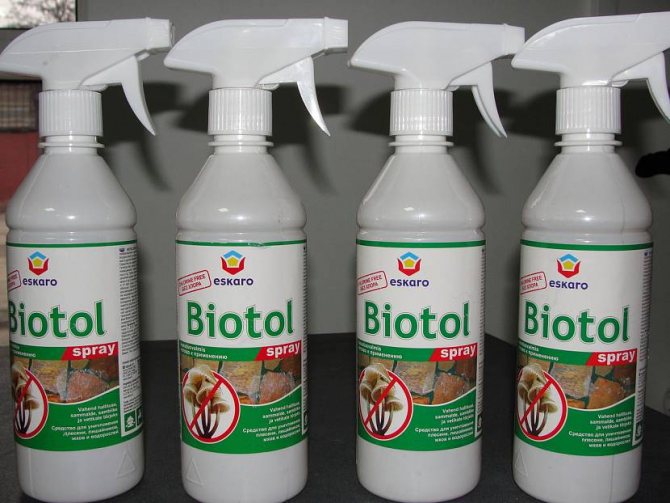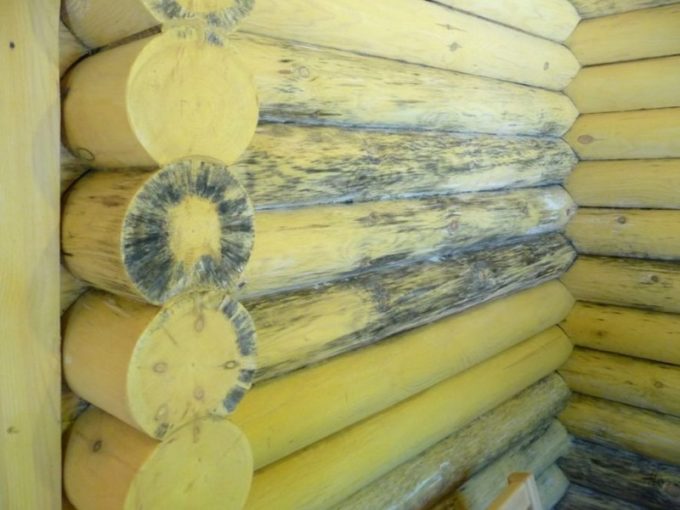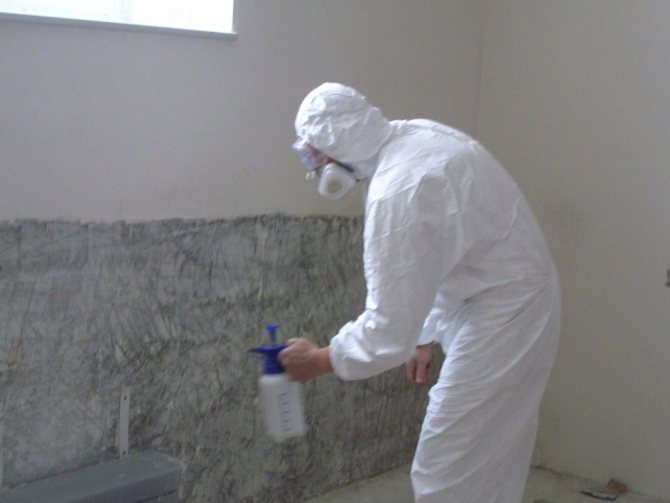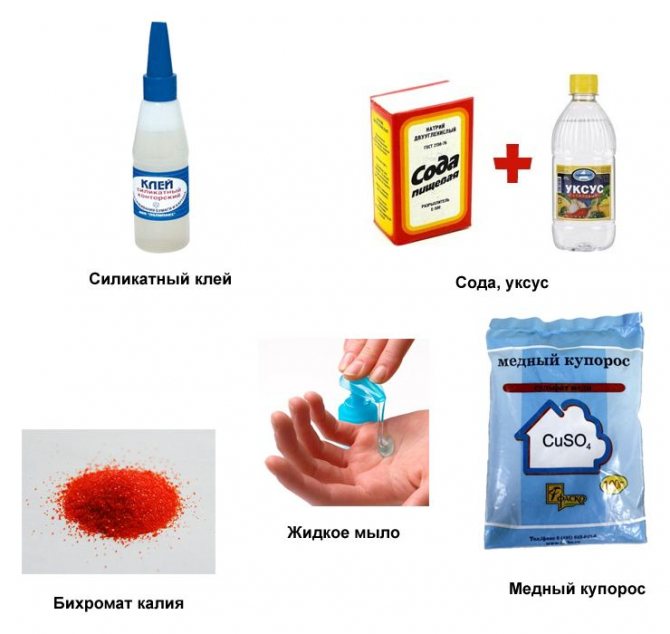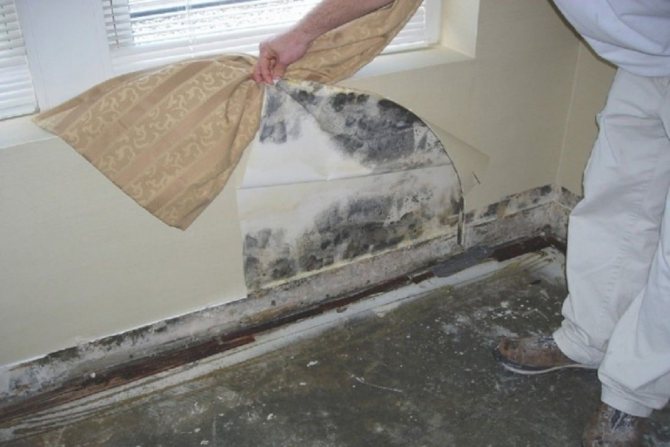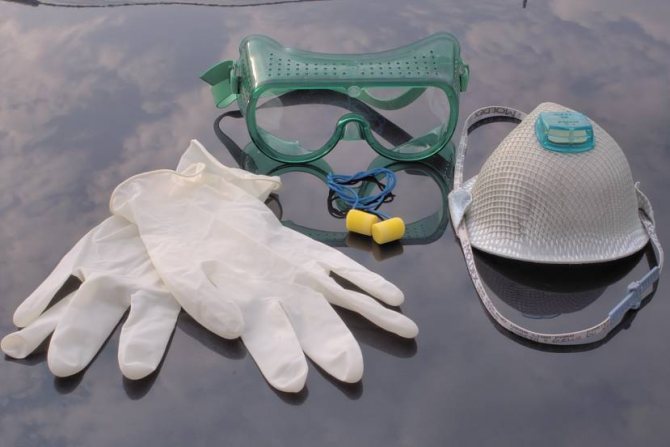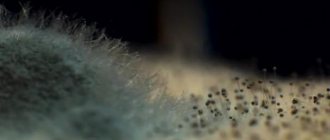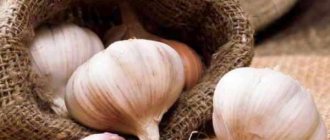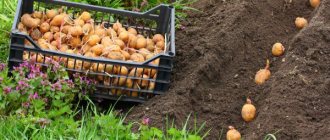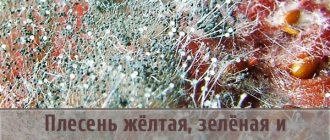Studies have shown that in every cubic meter of air in any room there can be 400-500 fungal spores at the same time, which are inhaled by people, and also settle on the surface of walls. The main danger of the described microorganisms is considered to be the darkening of the walls, as well as the gradual destruction of the structure of building materials. How to treat walls from fungus in an apartment or a country house? We will give the answer to this question in our article.
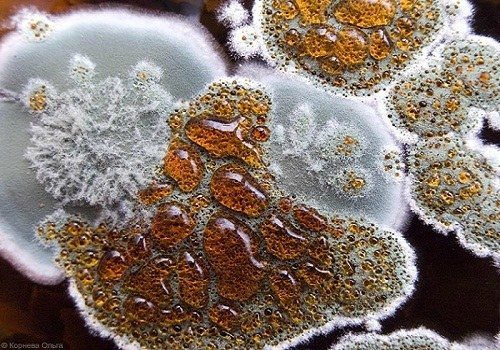
How to get rid of the effects of the fungus?
There is an opinion, which is probably based on our own bad experience, that the fungus cannot be defeated. For example, some people try to get rid of the problem by insulating the walls. But this approach not only does not help, but exacerbates the situation, since the fungus feels great in the heat-insulating material.
Or, spotlights are powerful and bright lamps that try to "dry the mold". Fungal spores quickly adapt to new conditions and easily tolerate "drying". Waterproofing over the mold, unfortunately, won't help either. Water will find an opportunity to bypass all the tricks and the mold will "bloom" again.
When you have taken all the measures to eliminate the cause of the appearance of the fungus, you can proceed to the next stage - removing the mold and drying the wall, after which you can start repairing. First, all old coatings are manually removed from the walls, and then the wall is thoroughly dried with soffits, a construction hairdryer or electric heaters.
The best option for such a procedure would be infrared heaters, the radiation of which penetrates deep into the surface and dries it as efficiently as possible. If the case is "difficult", then it is necessary to remove the layer of plaster, and drill holes in the places of the greatest spread of the fungus to see the depth of the lesion. And do not forget that all the described procedures must be carried out in a respirator so that dust and fungal spores do not enter the body.
The video below shows one of the simplest options for getting rid of mold with a cheap tool.
Before painting
If mold or fungus appears on the wall before applying the paint, then the colonies of these harmful microorganisms must be removed with a spatula along with a small layer of plaster. At the same time, the base is cleaned from dust and dirt, falling off plaster or remnants of an old coating.
Note! The damaged areas are treated with an antiseptic several times, which will prevent the formation of new colonies of fungus and mold.
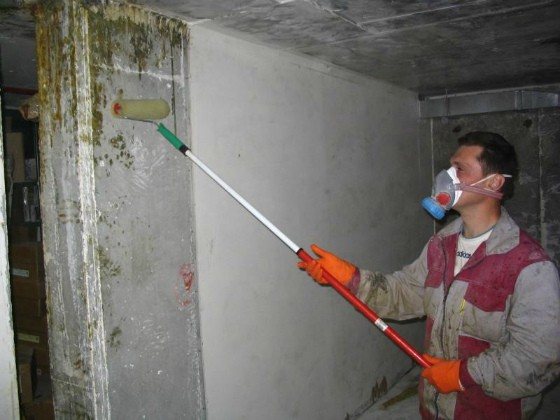

Antiseptic treatment
After the mortar has dried, the walls are covered with a deep penetration primer. This substance will promote good adhesion of the paint to the base surface. Then the base is leveled with a putty, a layer of plaster is applied to the heavily damaged areas. After the leveling mixture has dried, you can start painting the walls with the selected paint.
Means for fighting fungus and mold
In the question of the need for treatment with fungicidal agents, most experts give a positive answer. The risk of infection is also high in rooms with unfavorable conditions for the life of microscopic aggressors.Dampness can form, for example, when flooding by neighbors, when batteries are leaking, or careless watering of indoor plants.
Thousands of pathogens enter apartments and houses every day - on the soles of shoes, with gusts of wind from windows and vents, on pets, so the risk of developing mycelium is high. In the case when the vital processes of mushrooms occur under the wallpaper, the problem is not noticed for a long time, and if detected, it requires serious efforts to eliminate it.
The essence of processing the walls before gluing the wallpaper is to cover them with special compounds that have antiseptic and antifungal properties and takes place in several stages.
- Surface preparation and removal of contaminated materials.
- Application of the composition.
- Drying the walls.
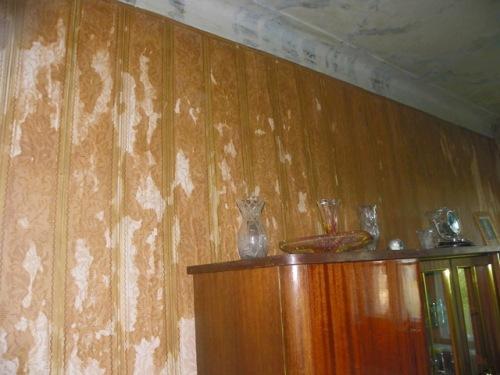

Antimycotic mixtures are applied to the wall with paint brushes, sponge or roller. The entire surface is completely processed, it is especially necessary to process the corners and baseboards, since it is in them that there can be accumulations of spores.
For a more pronounced result, the treatment is carried out two or three times, repeated application of the drug is possible after complete drying from the previous one.
The time for complete drying depends on the type of preparation, wall material and weather conditions. It takes one to four days for the surface to dry completely. It is necessary to completely eliminate residual dampness, so the ideal option is to dry the walls. It is also advisable to carry out antifungal treatment of the premises in summer or early autumn, during dry weather.
When can you glue?
New wallpaper can be glued after the above measures have been fully carried out, provided that the walls are dry.
Mold and mildew are not uncommon in houses and apartments, so mankind has come up with many ways to deal with uninvited "lodgers". At the same time, some of the popular tools differ in availability and composition:
- Apple vinegar.
- A solution of bleach or "Domestos".
- Disinfectant solution "Whiteness".
- Copper sulfate solution.
- Hydrogen peroxide.
Special antiseptics are also used, which can be purchased at hardware stores. It is much easier to use them. Ready-made mixtures for surface priming with antifungal components in the composition are also available.
The main reason for failures in the fight against mold is the elimination of the consequences, the visible result, and not the cause of its appearance. And the reason is simple - dampness, which molds are very fond of. It is with her that you need to fight first of all with the help of a number of measures. If the air humidity in the room is 95% or more, and the temperature is from 20 ° C, then the likelihood of the appearance and spread of mold is very high.
Such a high level of humidity can be in a living room in the following cases:
- there are plastic windows, which are rarely placed for "ventilation" and there is no air conditioner;
- a large accumulation of indoor plants in one place;
- frequent washing and drying of linen indoors;
- cool indoor air with high humidity outside;
- there are roof leaks;
- malfunctions in the water supply system, pipe malfunctions;
- malfunctions of the central heating system and plumbing networks;
- damage to a wall through which moisture enters from the outside, for example, during rain;
- incorrect insulation of the outer walls.
When all the preparation work has been completed, you can apply special antifungal drugs to the wall surface, of course, it is better after consulting a specialist. Today there are many effective means: impregnations and primers that penetrate deeply into the lesion focus. But, when choosing these funds, there are certain rules. It is necessary to choose not just biocidal preparations, but products specifically for a specific surface: concrete, brick, plaster, wood.
For example, Finnish manufacturers specialize in the production of biocides for wood. One of the most effective and popular Finnish remedies is Homeenpoiste, which contains chlorine, known for its antiseptic properties. Or, for example, German-made biocides, which are intended mainly for mineral surfaces. Although, there are universal remedies - antiseptics and paints, which will provide a lasting result in the fight against mold.
We offer you to familiarize yourself with: How to attach Penoplex to the wall inside the house
On the market of construction products, there are also Russian-made biocidal preparations, which are always popular with consumers. Their quality is at a decent level, and prices are noticeably lower in comparison with foreign counterparts. You can find in hardware stores and "BioDoctor" - a product from Ukrainian manufacturers. It is worth noting that these products have been tested on 19 types of molds and have shown a decent result.
When choosing any means to combat fungus and mold, you need to look at the purpose of this product. Often, the drug, especially imported, is intended only to prevent the appearance of fungi, and not to fight them. In general, read the instructions carefully and consult the seller.
The cost of primers and biocides per liter is different and depends mainly on the manufacturer. Such preparations are simple to use, they are sold in containers of 1-3-5 liters, ready for use. The product is applied to the surface with a roller or brush according to the description in the instructions.
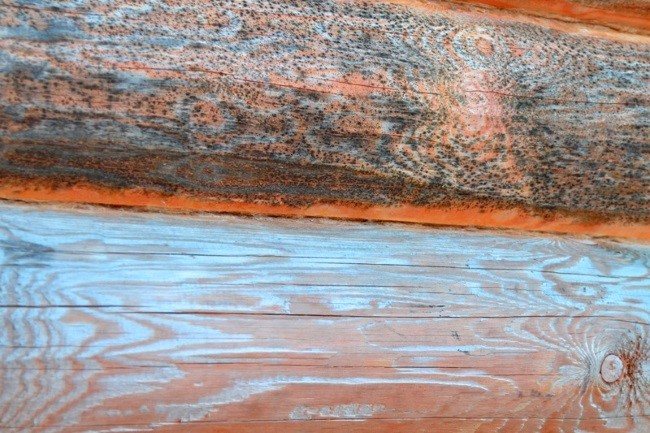

When working with these drugs, it is necessary to strictly observe a number of rules, namely, use gloves, goggles, and reliably protect the face and other parts of the body from getting solutions on them. After the biocide treatment is done, and the layers are dry, you can start finishing.
Be aware that if mold has settled in the house for a long time and cannot be dealt with on its own, then you should resort to the help of specialists. The sanitary and epidemiological station deals with similar issues. By the way, in Western countries there is a rule according to which it is impossible to independently deal with microbiological contamination if the affected area exceeds 90 cm2.
Most often, moldy spots or "caps" are found during repairs or general cleaning. Regardless of where they were found, it is necessary:
- examine the affected object, find out the boundaries of infection;
- find - if possible - the cause of the mold. It usually occurs in places with constantly high humidity and temperature;
- remove the reason. If the stain is found on the ceiling, check the roof / ceiling for leaks. If on the wall, identify the source of moisture and remove it. When mold fungi grow in the space under the floor (between the logs, on the log supports, on the underside of the boards), reduce the humidity and provide ventilation. With a relatively even distribution of mold - organize ventilation and dehumidification of the room;
- treat the affected surfaces mechanically and / or chemically until the blackness is completely removed;
- ventilate and dry the room until the smell of mold and chemicals disappears, as well as dust while abrasive removal of the affected layer.
In the future, it is necessary to maintain the correct temperature and humidity conditions in the room in order to avoid a repetition of the situation.
Next, we will consider in more detail what mold is, where it comes from, why it is necessary to fight it and how to do it specifically.
Allocate means for mechanical and chemical processing.
As already mentioned, you can mechanically remove mold from the surface with an abrasive tool and metal, as well as stiff plastic brushes.In addition, for a layer of mold fungi that has recently formed on a monolithic material (tiles, glass, metal, plastic), you can use a hard sponge and water with a soapy (disinfectant) solution.
With regard to chemicals, four main groups are distinguished:
- general purpose disinfectants. They may contain acids, chlorine, active oxygen, and other aggressive components. The effectiveness depends on what material the mold has grown on;
- natural and "pharmacy" antiseptics - vinegar, lemon and other acidic juices, soda (regular and soda ash), hydrogen peroxide, alcohol;
- aggressive con;
- specialized means for treating walls from mold and mildew.
Below are some popular recipes:
- table vinegar or vinegar essence. 9% vinegar is used undiluted, the essence is diluted to the content of acetic acid at the level of 8 ... 10%. Apply with a spray bottle or sponge (brush, roller). Good ventilation is necessary!
- hydrogen peroxide 3%. Apply in the same way as vinegar, undiluted;
- ammonia. It is applied in especially affected areas, diluted in a 1: 1 ... 1: 2 ratio. Work only in a respirator and in a well-ventilated area!
- a mixture of water, vinegar (9%), hydrogen peroxide and boric acid in a ratio of 4: 2: 2: 1. It is applied heated to 50 ... 70 degrees Celsius. Necessarily washed off;
- soda solution. Use 1 teaspoon or 1 tablespoon in half a liter of water. Washed off;
- a solution of tea tree essential oil (9 ml per 0.5 l of water). The resulting emulsion is sprayed with a spray bottle. It is not necessary to rinse it off, it additionally gives a pleasant smell.
Separately, it is worth considering the use of copper sulfate from mold. This toxic substance dissolves in warm water (20 ... 30 g per liter of water). Apply 2 ... 5 times, be sure to rinse off after the last application.
When working with this solution, in addition to a respirator, goggles, rubber gloves and special tight clothing are required. The same applies to surface treatment with vinegar, ammonia, peroxide and aggressive disinfectants.
The assortment of industrial mold remedies is quite extensive. They are divided into simple compositions for removing mold fungi and primers, impregnations, adhesives and other preparatory and repair mixtures.
Only the owners should decide how to treat the walls from mold. It is important to remember that a small lesion is much easier and faster to remove than a deep and perennial one.
Folk remedies for mold and mildew
The main types of antiseptics
Mold remedies are divided into groups:
- Used for concrete processing during the installation of structures;
- For the treatment of existing lesions with the prevention of relapse.
Funds that are intended to prevent colonization will be ineffective in removing black and yellow spots, and it is not economically feasible to use antifungal drugs for treatment to treat large areas during construction.


You can divide drugs according to the place of application:
- Means for surface impregnation, including deep penetration;
- Topcoats for mildew and mildew are often included in primers for walls, ceilings and floors;
- Antiseptic additives introduced into the concrete solution when it is mixed.
Antifungal agents have different compositions with different active ingredients and their concentration. The bases of the solutions also differ, and they are often guided by when choosing a drug.
Water-based solutions of mineral salts have the highest penetrating ability, but they also subject metal reinforcement to corrosion most intensively, therefore, surfaces made of steel and iron are not coated with water-soluble preparations.
The material has one drawback - the substance is washed out as easily as it is applied.For this reason, water-based anti-mildew is added to concrete and plaster solutions as an additive - in this form, the product lasts much longer.
Products based on water and minerals are intended for internal use. They are suitable for treating ceilings, partitions and walls from fungus and preventing its appearance in living rooms, including nurseries.
Group representatives:
- NORTEX-Doctor for concrete (treatment and prevention, price from 126 rubles / kg),
- Opti-bio 1, 2,3 (prevention, price from 26 rubles / liter).
Powerful and effective preparations against mold and mildew are suitable for the treatment of concrete, brick and stone walls. Unlike other means, solutions on organic matter do not harm the reinforcement, and they stay on the surface for a longer time.
The advantage of the material is its high efficiency - the product is capable of disinfecting even the most neglected form of mold in 1-2 applications. And this advantage covers a number of disadvantages:
- The toxicity of the substance does not allow its use in residential premises;
- Greasy brown stains from the preparation remain on the concrete walls, so further finishing is impossible, only cladding with hinged systems.
Antifungal organic solvent suitable for use:
- In garages;
- In technical premises;
- In the basements.
We suggest that you familiarize yourself with How to sheathe a wall near a stove
Effective representatives:
- Fongifluid Alp (ALPA) about 280-300 rubles / kg;
- Mavix Bio in combination with an organosilicon water repellent (570 rubles / kg);
- Varnish Anti-mold for concrete (about 100 rubles / kg).
Combined solutions are suitable for treating walls from mold indoors and outdoors. In addition, they form a waterproof film and have flame retardant properties.
Advantages of funds:
- Odorless or non-toxic;
- Suitable for wet rooms;
- Do not change the color and structure of the surface, you can make further finishing;
- Deep penetration up to 8 centimeters;
- Relatively low consumption - about 0.3 ... 0.5 liters per 1 square meter;
- Retains properties for up to 20 years.
With the help of combined fungicidal agents, you can both get rid of parasites and prevent their appearance. You should carefully read the prescription of the drug when choosing it.
- "Anti-mold" (a universal remedy for radical disposal of fungal colonies, price - about 270 rubles / kg.);
- Macrosept palette (about 87 rubles / kg);
- Dali (universal antiseptic, price from 125 rubles / kg).
Means for fighting fungus and mold
- lesions of the respiratory system;
- allergic reactions and skin diseases;
- dizziness and headaches;
- diseases of the musculoskeletal system;
- nausea and stomach upset.
Long-term exposure to harmful spores affects internal organs.
About 40 species of molds live in our homes. The most common are:
- black;
- green;
- white;
- blue;
- gray;
- pink.
Only an integrated approach will help get rid of the fungus. It is not enough to simply wash the room and process the walls from mold and mildew in the apartment. It is necessary to create a certain microclimate in which it will never appear.
Main activities:
- Cleaning the affected surfaces.
- Anti-mold treatment with a product that destroys it.
- Getting rid of things that have become unusable due to deep fungal damage.
- Provide constant ventilation of the room from air stagnation.
- Reduce humidity. Remove the causes of increased moisture.
We invite you to familiarize yourself with: MDS 31-12.2007 “Floors of residential, public and industrial buildings using materials from Henkel Bautechnik. Materials for design and working drawings of units »|| Adjoining the floor along the ground to the wall
Protection from dampness and regular disinfection are the main conditions for fighting against mold.
Why does condensation form on the wall and how to deal with it?
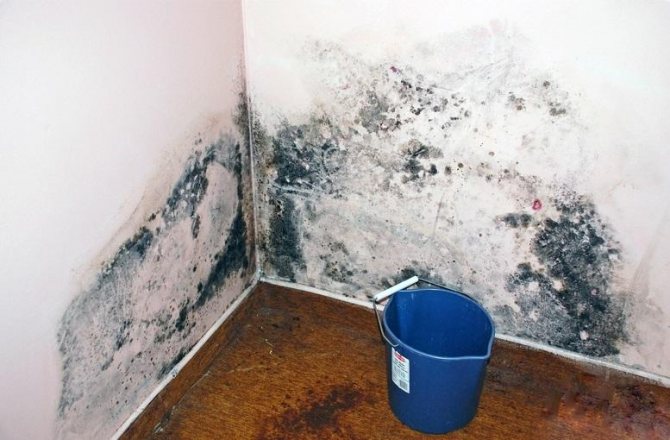

It would seem that, apart from an unaesthetic appearance, there is nothing unpleasant about mold stains. However, it is not. The presence of mold leads to:
- the appearance of a persistent unpleasant odor in the room;
- gradual deterioration of the affected surfaces. Wallpaper, plaster and paint peel off, grout in the joints collapses, furniture loses strength, porous materials lose their original color and texture. Mold fungi are especially destructive to wood and wood-based materials;
- development of diseases of residents. The list of potential problems includes asthma, allergies, frequent headaches, weakness, and an obsessive cough.
The reasons for the fight can also be attributed to problems with food - in a room infected with mold, they will deteriorate much faster, and even in packaging.
Important: even a slight odor of mold from the products should cause them to be destroyed! No heat treatment completely removes the risk of contamination. The appearance of visible traces of mold on textiles, fur, skin indicates their failure. Textiles that can be washed at high temperatures can be tried to “save”.
Not only humans will suffer from fungal-related diseases - pets are also prone to allergies.
If there is no moisture inside the walls, fittings and embedded screws are not covered with rust, then the matter is in the internal condensation. The methods of struggle here are different.
Condensation in the wall is associated with the dew point. When there are changes in outdoor temperature in relation to indoor temperature, even if the humidity is normal, condensation appears on the walls. The dew point directly depends on the temperature difference between the air and the walls in the apartment and the humidity in the room.
There are two main ways to solve this problem:
- Increase the thermal resistance of the walls so that the point is not on the inner surface of the wall, but inside. Or heat them, just as it happens during the heating season.
- Lowering the relative humidity is probably the first thing to do. The temperature on the surface of the walls should not be low so that condensation does not form.
How to reduce the air humidity in the room? It is necessary to arrange for its output to the outside through the exhaust ducts. But it should be remembered that in order for the air to “stretch out” it must be “drawn in” somewhere, which means that it is necessary to provide an inflow of fresh air. Most often, ventilation in a dwelling takes place using a window or a slightly open window.
But, it is worth noting that the window is not able to cope with the tasks of ventilation, and keeping it open all the time is unlikely to work. Therefore, it is worth considering supply ventilation. Of course, the best option would be a comprehensive solution to the problem. That is, it is necessary to insulate the walls from the inside, to reduce humidity with the help of ventilation.
Why does mold appear on the walls?
- Moisture seeps in from outside through damage to the wall.
- Damp warm air inside the room comes into contact with cold walls and moisture (condensation) forms on their surface.
- Communication failure not detected in time.
Until the moment, until you know exactly the cause of the appearance of mold, do not purchase any means to combat it, since each case requires a separate solution.
For example, external moisture. If mold appears on the walls, it is necessary not only to remove the mold itself, but also some of the plaster. If the wall is damp inside, it means that moisture comes from the street through cracks and processing the wall inside the room with solutions and compounds will not help. To solve this problem, you can use different methods, the choice of which depends on the financial capabilities and the specific situation.
One of the most effective and at the same time affordable ways is to apply an additional layer of plaster outside the building. You should be aware that ordinary sand-cement plasters have a low vapor transmission capacity, therefore condensation forms between the coating and the wall. Consequently, the surface of the main structure will be wet at all times.
How to make a choice
First of all, you must carefully read the instructions. Pay attention to the main positions:
- Scope of antiseptic drugs (external walls, internal rooms);
- The basis of the preparation (solutions in oil cannot be covered with finishing);
- Time of use (to process existing colonies or to prevent their appearance);
- The service life of the drug.
For technical premises, it is better to choose compositions based on organic solvents - they do not add aesthetics, but they reliably protect against recurrence and remove the most complex and dangerous types of parasites.
How to treat walls in living rooms: with water-based or combined antiseptics. They are non-toxic and odorless. There are products designed specifically for use in wet areas such as bathrooms, swimming pools and saunas.
Risk factors
It is necessary to establish the cause of the appearance of mold fungi before choosing a way to get rid of it. Usually, the maximum risk of its development occurs where:
- humidity is constantly increased (60 ... 80%). Condensed moisture settling on surfaces is an excellent environment for the development of fungi;
- moderate temperature. Mold spores grow best in the range of 4 ... 20 degrees Celsius, but they successfully survive in extreme heat and frost;
- poor ventilation. Stagnation of air allows high humidity, even dampness, to persist for a long time, contributes to an uneven distribution of temperatures in the room.
Thus, mold most often appears in cold bathrooms, rarely used baths, on damp (not heated, but glazed) balconies and loggias, in poorly ventilated and damp cold rooms and storage rooms.
Important: sometimes only a characteristic smell indicates the appearance of mold fungi, there are no visible signs.
Indirectly, the appearance of a fungus is also indicated by:
- an increase in respiratory and infectious diseases among residents;
- manifestation of previously unnoticed allergies;
- often irritation of mucous membranes and skin;
- fatigue, unreasonable nausea and vomiting;
- headaches and dizziness;
- irritability, mental instability;
- lack of coordination;
- feverish conditions (increase in body temperature to 37 ... 37.5 degrees, aches, pain in joints and muscles);
- general weakness and malaise.
We suggest that you familiarize yourself with: Which side to put the vapor barrier on the Isospan floor
Depending on in which particular room and in what place the problem arose, they choose how to remove the mold from the walls in the apartment.
Defeat elimination options
The fight against mold must be fought on all fronts. The first step is to find the source of dampness, eliminate it (replace pipes, clean the sewer, re-block the roof or properly insulate the walls). Then the affected area is dried, and only then can the treatment be carried out with means to remove the fungus. Knowing how to remove mold from walls, floors, and ceilings can help prevent the most common backfire mistakes. It is often the wrong actions that cause the lesion to spread.
Removing fungus from concrete or masonry surfaces is easier than removing from wood. And all because moisture penetrates into the deepest layers of wood and creates favorable conditions for the development of a pathogenic microorganism. Concrete gets wet very quickly, but it is much easier to dry. In the winter season, for these purposes, you can turn on the heat gun. Wood is organic.Under the influence of moisture, it begins to rot. Decay products are an ideal food source for mold. Therefore, the best remedy for fungus on the walls, folded by their logs, is preventive treatment. It is more advisable to use solutions that prevent the development of the fungus. It is almost impossible to "treat" an already affected tree.


Fungus-Touched Tree Source
See also: Popular designs of wooden houses with a terrace
General operating principle
Distinguish the features of manipulation depending on which room - residential or non-residential, warm or cold, ventilated or not - the infection occurred.
It is considered mandatory:
- complete removal of the affected layer of material;
- processing after mechanical cleaning with antiseptics;
- complete drying and ventilation of the treated surfaces before re-finishing.
All work is carried out in personal protective equipment! Before mechanical cleaning, the surface is wetted - this will prevent mold spores from spreading with dust through the rooms.
Often during cosmetic repairs, mold fungi in the form of a scattering of dark spots or gray-black spots are found under the removed wallpaper or cladding. This is due to the fact that, for one reason or another, the humidity in the room was increased, and with relatively warm air, the walls remained cold. Condensation formed on them was “hidden” under wallpaper, cladding or plaster. At the same time, there was a "nutrient medium" in the form of wallpaper glue, organic components of plaster or a base for cladding.
What needs to be done:
- completely remove the old finish. If there is mold on the walls, it is almost certainly present under the floor and ceiling covering, in secluded places under the windowsill, behind the radiator, under the baseboards and threshold;
- identify all the affected areas and the depth of the affected layer. To do this, it is necessary to knock down the base plaster from the surface in several places and check how deeply the mold mycelium has penetrated. The depth can be up to 5 ... 10 mm, depending on the density of the material;


- mechanically (with a brush, a special attachment for a grinder or drill, sandpaper, a grinder) clean the surface;
- treat the cleaned walls with an anti-fungal agent;
- perform a new finish after the surfaces are completely dry.
It is necessary to decide which remedy for mold and mildew on the walls in the apartment to use, depending on whether this room will be used as a residential one, and what kind of decoration will be used.
Here, the same sequence of actions applies as for the treatment of walls. The only difference is that it is much more difficult to remove the finish from such surfaces, and to create it anew is more costly and time-consuming.
Important: it is impossible to mount new coatings, only slightly removing the visible elements of the lesion! Under a new stretch ceiling or laminate, mold will grow even faster and more extensively!
Secluded places
These include hard-to-reach corners in the seams between facing tiles and panels, places under thresholds, window sills and baseboards, boxes for wiring and communications. Since it is difficult to reach such corners with a large power tool, it is better to use manual metal brushes, chisels, miniature cutters and abrasive nozzles.
Particular attention is paid to the joints between tiles and cladding panels. It is necessary here:
- rinse the surface of the cladding with active detergents (Domestos, Whiteness and analogues) means. This will help to make out where the dirt is, where is the mold;
- remove grout between cladding elements. It is advisable to do this with a special tool;
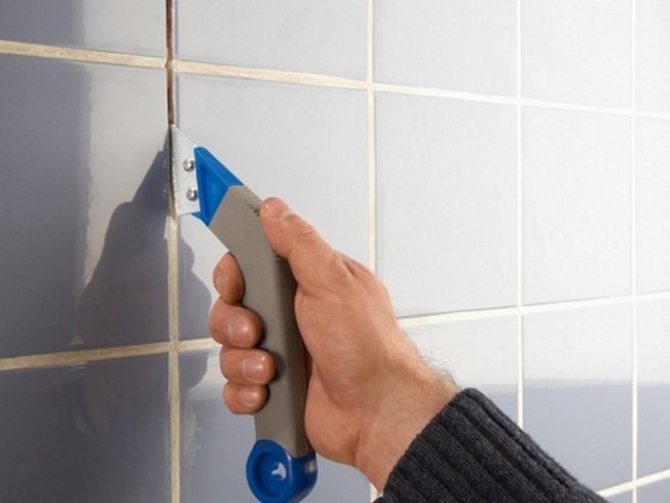

- processing the space between the tiles with a concentrated antiseptic;
- new sealing of seams.
Important: an antiseptic against mold and mildew for the bathroom and kitchen is chosen that is as harmless to the health of people and pets as possible.The increased humidity in these rooms will lead to the evaporation of harmful substances and damage not by a fungus, but by toxins.
Folk remedies
Today in stores you can find a number of special preparations, and do not think about how to process the walls. If processing is carried out during the construction and repair work, use the following tools:
- Dali;
- Biotol;
- "Fongifluid fungicide";
- "Olympus stop".


Floor and walls are treated with these mold removers and are effective and non-toxic.
If the problem arose after the house was built and renovated, apply:
- Denkmit Schimmel-Entferner;
- Anlas mykos;
- Savo Przeciw Plesni;
- "Antisept";
- "Abedis".
When choosing a composition, pay attention to which surfaces the anti-mold agent is intended for and make a purchase according to the type of material to be treated.
To combat mold, folk remedies are often used, as well as chemical compositions:
- chlorine;
- borax;
- ammonia;
- hydrogen peroxide;
- creosote;
Let's take a closer look:
- Bleach is suitable for processing tiles, wood, glass, bathtubs. It is necessary to dilute it in a ratio of 1:10. Before use, pour into a spray bottle and work with gloves and a respirator. Do not rinse off after treatment. Bleach can whiten the surface, so be careful with expensive items.
- Bleach destroys all types of mold and mildew spores.
- Borax is applied to the surface in a ratio of 1 cup to 2.5 water. Suitable for wall application.
- Vinegar - destroys all types of mold. We place it in a spray bottle, apply it to the surface. It is necessary to leave for an hour, then rinse with water and dry.
- Peroxide - a 3% solution is useful, which can be sprayed until the walls are completely impregnated. We leave it for 10 minutes, then we clean it off along with the mold and rinse it.
- Ammonia - diluted 1: 1 with water. We spray, remove along with the mold.
- Tea tree oil can be used. You will need 1 teaspoon of oil in a glass of water. Apply to the mold and leave.
- Homemade solution: trisodium phosphate 3 table. spoons and 100 ml. bleach, all this must be diluted in 4 liters of water or 2 tablespoons of acetic acid per 10 liters of water and half a kilogram of copper sulfate.
Mold and mildew in the bathroom
Favorite places for mold are the bathroom and toilet, as this is a place of high humidity. For example, a leaking toilet or a dripping tap are already sufficient sources of dampness. That is why the plumbing must always be in good condition, and all arising, even small malfunctions, must be eliminated immediately.
The source of humidity in the toilet can be a cold water riser, as its insulation is broken over time. This problem can be determined by the presence of permanent condensate on the pipe. If this happens, then urgent action is needed. You can protect the riser with special steam-plastic pipes, which come in different diameters, or use special-purpose scotch tapes.
Often, the culprit in bathroom troubles is a heated towel rail that does not dry out the humid air of the bathroom insufficiently. Of course, replacing a heated towel rail is not easy, and not cheap, but the result, believe me, is worth it. During periods when hot water is turned off and the level of humidity in the bathroom rises, you need to take care of additional heating of the room.
It is very important to ventilate the bathroom, therefore proper ventilation is essential. Ventilation in the bathroom, as in the whole room, is designed even before the construction of the house, but it is imperative to check its performance and, if necessary, install a fan that does not require large expenses.
Tags: handle, mold, wall, dampness
«Previous post



